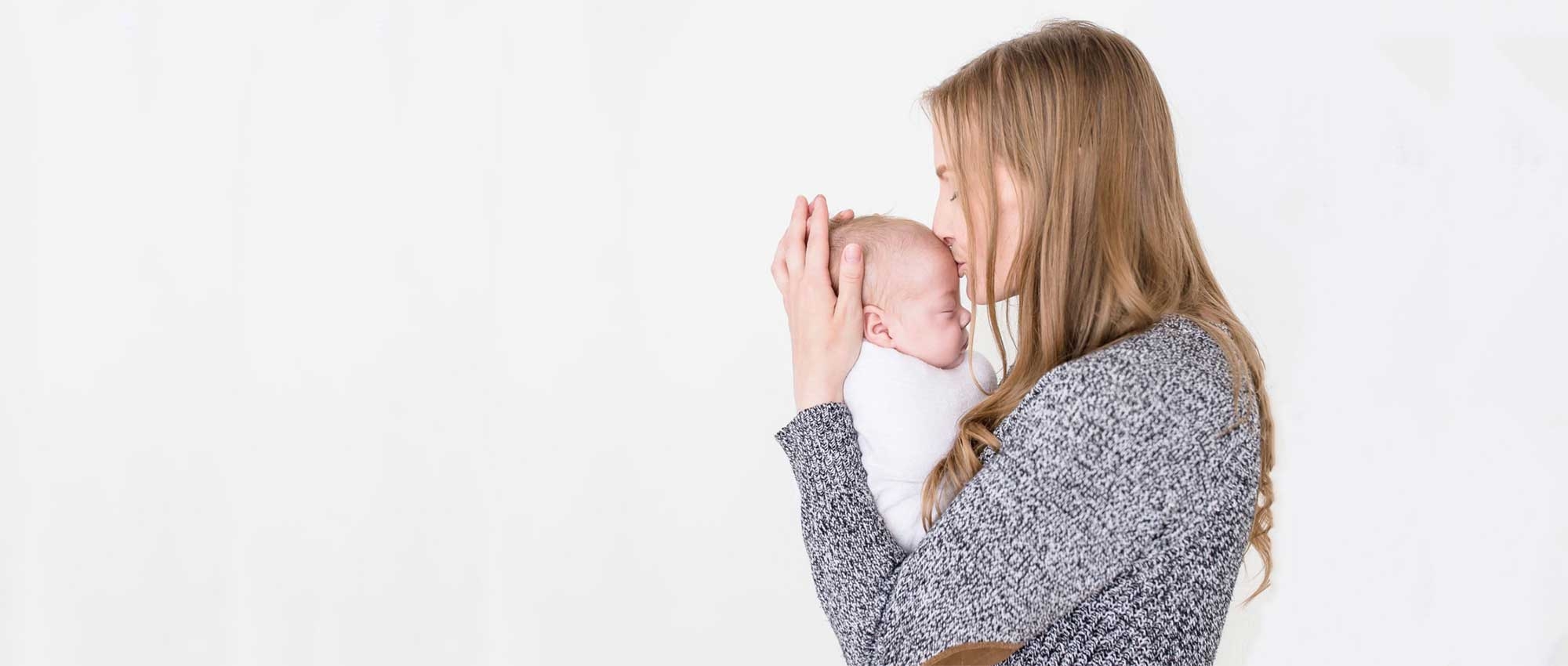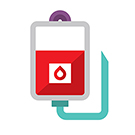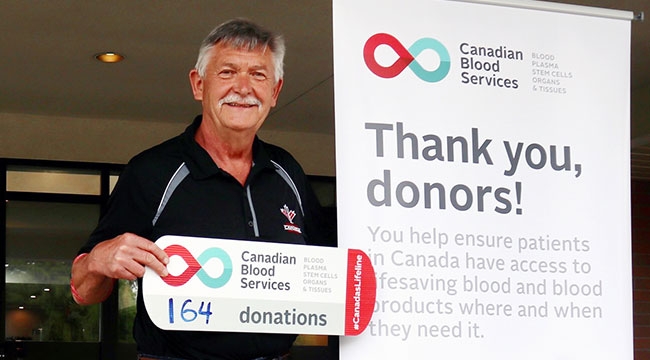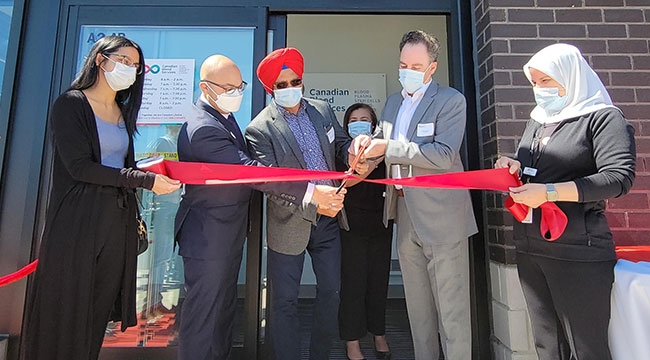How blood donors delivered hope in a family’s time of need
It took more than 20 blood donations to save Sam Walker after she delivered twins. Now she helps recruit new donors, to both help future patients and honour the son she lost.
Sam Walker kisses her son Sutter, who was born in December 2021.
We need 100,000 new donors to join Canada’s Lifeline this year. You can help by making an appointment to donate blood or plasma. Using the GiveBlood app? Just click “take a selfie” to inspire others on social media. Don’t forget to tag @canadaslifeline!
Sam Walker is so grateful for the blood donors who saved her life and gave hope to her growing family at a dark time.
In July 2020, Sam and her partner Chad Lounsbury learned they were expecting a new sibling for their four older children. But a first ultrasound revealed a high risk of miscarriage. The couple was still coming to terms with that discovery when they went for a follow-up ultrasound about a week later.
“We were surprised to find not just one strong heartbeat, but two: identical twins,” says Sam, who lives in Carberry, Man., about 170 km west of Winnipeg. “It took a while to wrap our heads around the shock and the joy of it all.”
Unfortunately, more difficult news lay ahead, when a consultation with specialists at Health Sciences Centre (HSC) in Winnipeg delivered further insights about the unborn twins who came to be known as Wylie and Sutter.
A high-risk pregnancy for a mother and her unborn children
Wylie was diagnosed in utero with omphalocele. It’s a condition where the intestine, liver or other organs protrude through the infant’s abdomen through the belly button, and push into the umbilical cord. The couple learned that while many babies with this diagnosis go on to live very normal lives after surgery, some are found to have other life-threatening challenges.
Then in October 2020, another scan revealed trouble for Wylie’s twin. Sutter was diagnosed with a serious heart defect and had just a single artery in his umbilical cord instead of the usual two.
“All of these traits combined to strongly indicate genetic anomalies,” says Sam. “That would mean our babies would likely not survive past birth.”
The pregnancy was high risk for Sam as well. At 19 weeks, she was diagnosed with placenta previa. It’s a condition where the placenta — the organ which nourishes a growing fetus — completely or partially covers the opening of the uterus (cervix). In Sam’s case, the twins shared a single placenta, which not only blocked the cervix, but began growing into the uterine wall — a second dangerous complication known as placenta accreta.
For her own safety and that of the twins, Sam’s doctor prescribed bed rest at home. But just a week later, she had to be rushed to hospital by ambulance when she experienced significant blood loss related to the placenta previa.
“With four other kids at home, it was really tough to be away,” shares Sam. “I was discharged after about a week, with the condition that I would stay put in bed.”
Sam’s second phase of bed rest lasted about a month before she was back in hospital, this time because Wylie’s amniotic sac had burst at 24 weeks. Even so, the family remained hopeful, particularly after the results of some earlier genetic tests on the twins’ amniotic fluid came back normal.
But shortly afterward, Wylie took a turn for the worse, with a rare condition that sometimes develops in twins who share a placenta. He was not getting enough oxygen and nutrients and became severely anemic. As he stopped growing and became weaker, doctors planned to deliver the babies at just 27 weeks.
Blood transfusions save a mother’s life after a difficult birth
The night before the operation in Winnipeg, Sam was grateful for a visit with Chad, after weeks of separation due to COVID restrictions. He had just left for the night when she began to hemorrhage at around 10:30.
“It’s all kind of a blur, but yet so vivid,” says Sam, who recalls being suddenly surrounded by hospital personnel and rushed to the operating room. “I remember panicking about where my phone was. As they were racing me down the halls, I used it to call Chad and then my mom.
“The last thing I remember was seeing my very sweet doctor’s face, and her telling me that she’d made it in time and was there for me.”
Wylie and Sutter were born on Dec. 22, 2020, at 11:02 p.m. Sadly, Wylie passed at 11:12 p.m., while his mother was fighting for her life in the operating room. She nearly died herself after suffering a collapsed lung and perforated uterus, and she required an emergency hysterectomy immediately after the birth of the babies.
To survive, she required transfusions of 21 units of blood. So now, even as she continues to grieve the loss of her son, Sam is filled with deep gratitude for blood donors.
“It’s overwhelming to think about the 21 people who had to donate blood to make my life possible today,” she says. “What an incredible gift to be able to give life.”
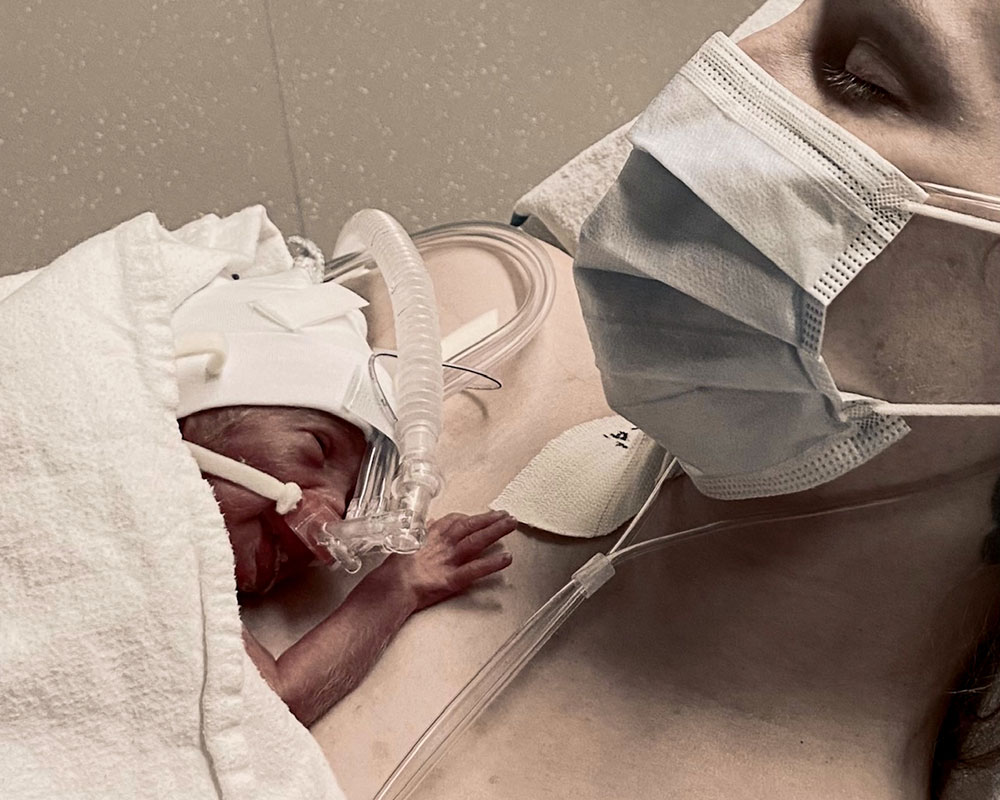
Sam Walker recovered in hospital while spending time with her newborn son Sutter, who spent the first weeks of his life in neonatal intensive care.
On Dec. 23, the day after the surgery, Sam woke up alone on a ventilator in the surgical intensive care unit. It wasn’t until the following day, Christmas Eve, that she was able to meet and hold Sutter for the first time, and days beyond that before she could see Wylie.
“Incredibly, I was discharged by day eight,” she says. “I was able to go home, and I held Wylie for the first and last time before laying him to rest on New Year's Eve of 2020.”
Blood donors and a loving community delivered hope
Sutter stayed behind in the hospital’s neonatal intensive care unit for another 80 days. It was a challenging time. Sam recovered from her own near-fatal complications while learning to care for Sutter, as the whole family grieved the loss of Wylie.
They settled into a difficult new normal. Sam and Chad were grateful to be able to stay in Winnipeg at Ronald McDonald House, which supports families of children going through medical treatment far from home.
Meantime, Sam’s parents, and Chad’s mother cared for their four older children in Carberry, including their son Noah, 10, who is autistic and non-speaking.
“I remember connecting with my kids through FaceTime from the hospital, and Noah was understandably concerned and angry with me,” recalls Sam. “He didn’t understand exactly what was happening or why it was happening. The kids’ whole world got turned upside down.
“The toughest part was knowing I couldn’t ’fix it’ or be there for my kids.”
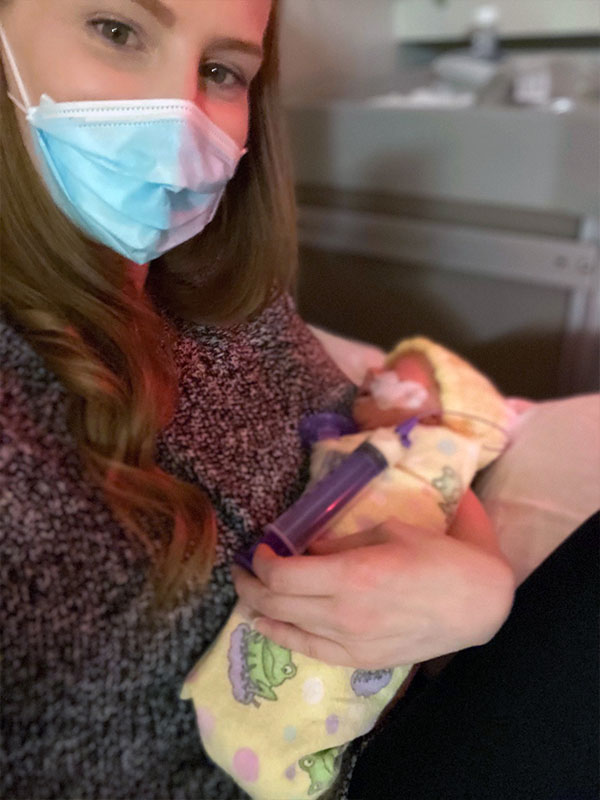
Nurses helped Sam Walker learn to care for her son Sutter, including how to feed him with a feeding tube.
The couple is so grateful for all those who stepped in to help Noah and the entire family at that time. Chad’s aunt organized a meal train, and the community came together to provide hot meals and donations. The funds helped cover the family’s many costs while Chad took a leave from his job as a freezer warehouse operations manager.
The support at home made it possible for Sam to focus on her own recovery and attend to Sutter in hospital.
“Things were pretty rough for a while, but just trying to keep Sutter going in the NICU and being there every day for him was really motivating, rewarding, and helped keep me grounded and present,” Sam says.
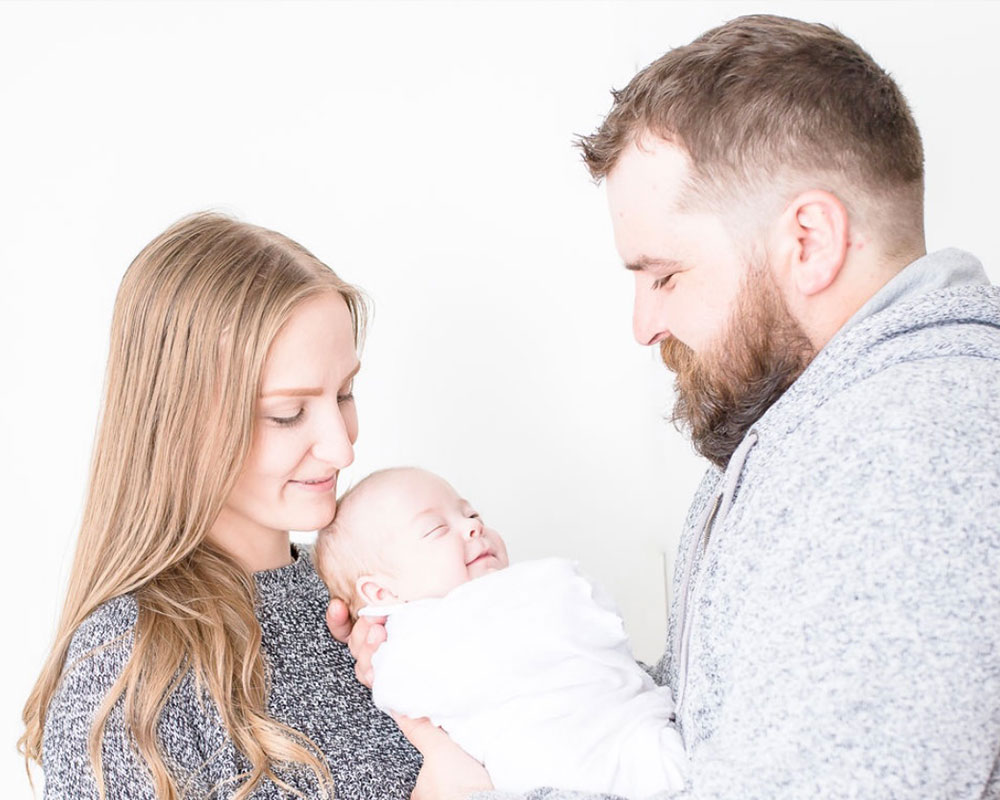
Sam and Chad hold their infant son Sutter.
Sutter needed help breathing, so was connected to a Continuous Positive Airway Pressure (CPAP) machine.
“I had incredible nurses that taught me so many things,” Sam says. “By the end of it, I knew I could do his entire care routine myself, including how he needed to be positioned, turned, and wrapped, and how to disconnect and reconnect his CPAP machine vent tubes in his crib, so I didn’t have to ask to pick him up and lay him down.
“Being able to do things for him was very good for my mental health.”
‘There can be a strong link between grief and giving back’
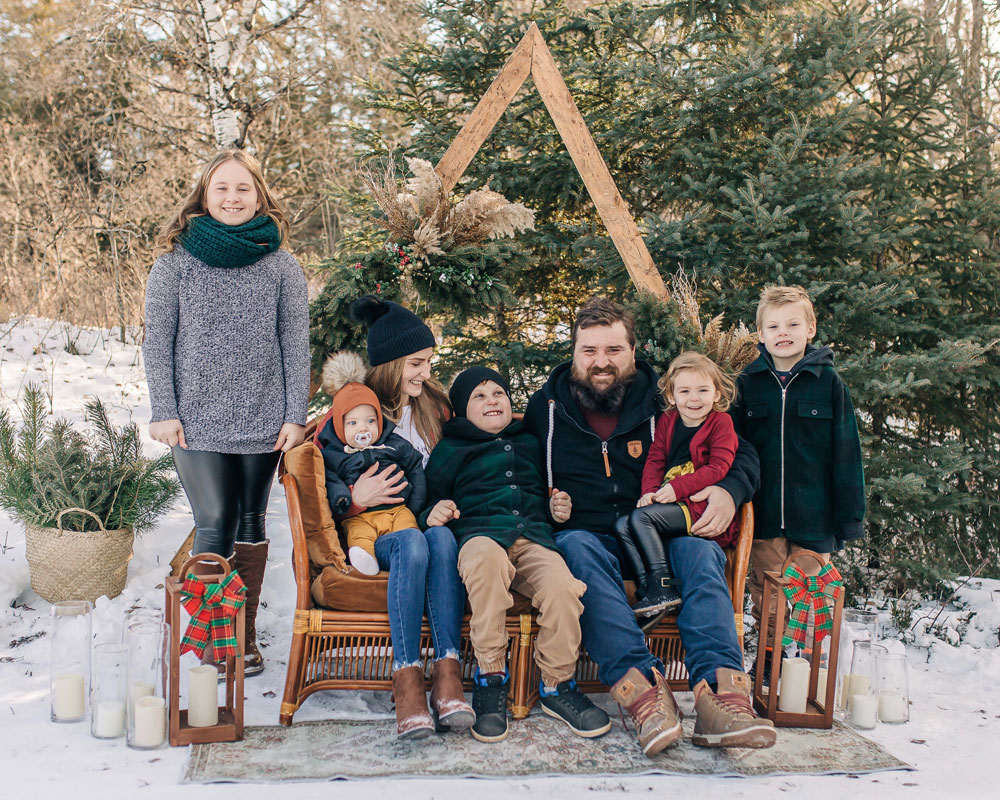
Sam and Chad with their children, posing for a holiday photo in late 2021.
The whole family was back together again in Carberry in March 2021, though there have been many trips to Winnipeg since then for checkups and treatment for Sutter. Today, however, Sam is physically recovered from her ordeal, and Sutter is a happy, healthy 17-month-old.
“He’s doing great,” says Sam. “He’s the center of our whole house right now. His siblings adore him and he's just the happiest little guy.”
The family had expected Sutter might need regular blood pressure checks and medication for the rest of his life, but they were able to celebrate his final dose at around the time of his first birthday in December.
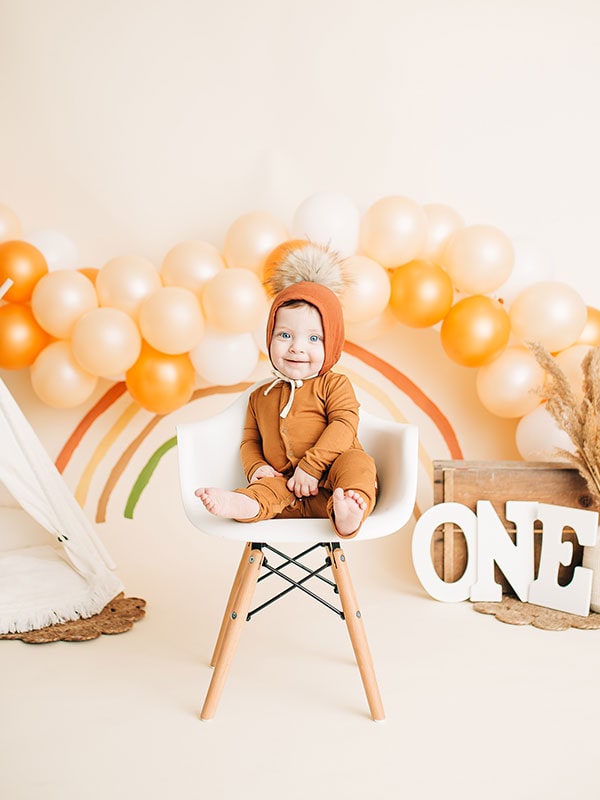
Sutter celebrated his first birthday in December 2021.
Sam is also giving back to the community that supported her family through many difficult months.
“I have found there can be a strong link between grief and giving back,” says Sam. “I’ve been getting busier and busier and more involved in things. I do as much volunteering as I am able.”
Last December, the family joined a project called Love For Littles, which supports families with newborns in neonatal intensive care. They donated books to the NICU at the hospital in nearby Brandon, Man., in memory of Wylie and in honour of Sutter.
Sam has also been helping with efforts to fund and build a splash park in Carberry. Chad and Sam also aid Chad’s mother, who chairs a Ukrainian relief committee in the community. And twice a month, Sam also travels to Winnipeg to volunteer at peer support group meetings at the NICU where Sutter spent his first days.
“I can check in, listen and share with other parents who are navigating similar roads, and stuck where we were not so long ago,” she says.
Not only that, she has worked with hospital personnel to make things better for future patients who endure the loss of a newborn during their stay. Sam was devastated by the experience of not being able to hold Wylie until after she’d been discharged home.
“It was really tough not being able to share time with Wylie in the hospital,” says Sam. ”So I shared my experience with Health Sciences Centre (HSC) in Winnipeg, hoping to make a difference for moms dealing with similar situations.”
The result was very positive.
“I got a very emotional call from HSC informing me that they have now implemented ‘cuddle cots,’” Sam says. “These cots sit next to the mom’s bedside for parents who experience the loss of a baby, allowing them to keep the baby close, share time, and get a chance to hold and care for them. No mother will ever go without that time again.
“I have no words to describe what this means to me.”
Blood donors provide ‘the most incredible gift’
Sam has also joined Canadian Blood Services Stem Cell Registry, in the hope of one day being able to provide lifesaving stem cells to a patient in need.
“I was really emotional to learn that I could still donate stem cells after receiving blood myself,” she says. “It feels as though these are all ways that I can love Wylie and honour his life. It may have been short, but he made an impact on us all. He changed me.”
After blood donors saved her own life, Sam has also become powerful advocate for blood donation.
“It's because of blood donors that people like me get to watch their children grow. It’s the most incredible gift,” she says.
In February, Sam shared her story as part of Canadian Blood Services Manitoba’s Fill the Seats Radiothon, and she continues to explore other opportunities to support Canada’s Lifeline.
“I would really like to put together a blood drive in honor of Wylie,” she says. “I've talked to family and friends about this. Some want to become blood donors, and some that already donate blood are excited to come out and support us.”
Like many people, Sam had never donated blood herself before she became a patient in need, though she had long admired two other devoted blood donors — her two grandmothers.
“I remember being very young and going with them to donate blood, and thinking, ‘this is something I want to do,’” Sam recalls. “But time goes by, you get busy, and I didn't schedule an appointment. Before I knew it, I was a blood recipient before I had taken the opportunity to donate.”
While 1 in every 2 people in Canada is eligible to donate blood, plasma or platelets, only 1 in 81 actually does.
Sam urges others not to wait to book their own first blood donation.
“Take the five extra minutes out of your day right now and just do it,” she says. “If you don’t already know or love someone who has needed blood products, chances are you will. All it takes is one person to make some big ripples. “
